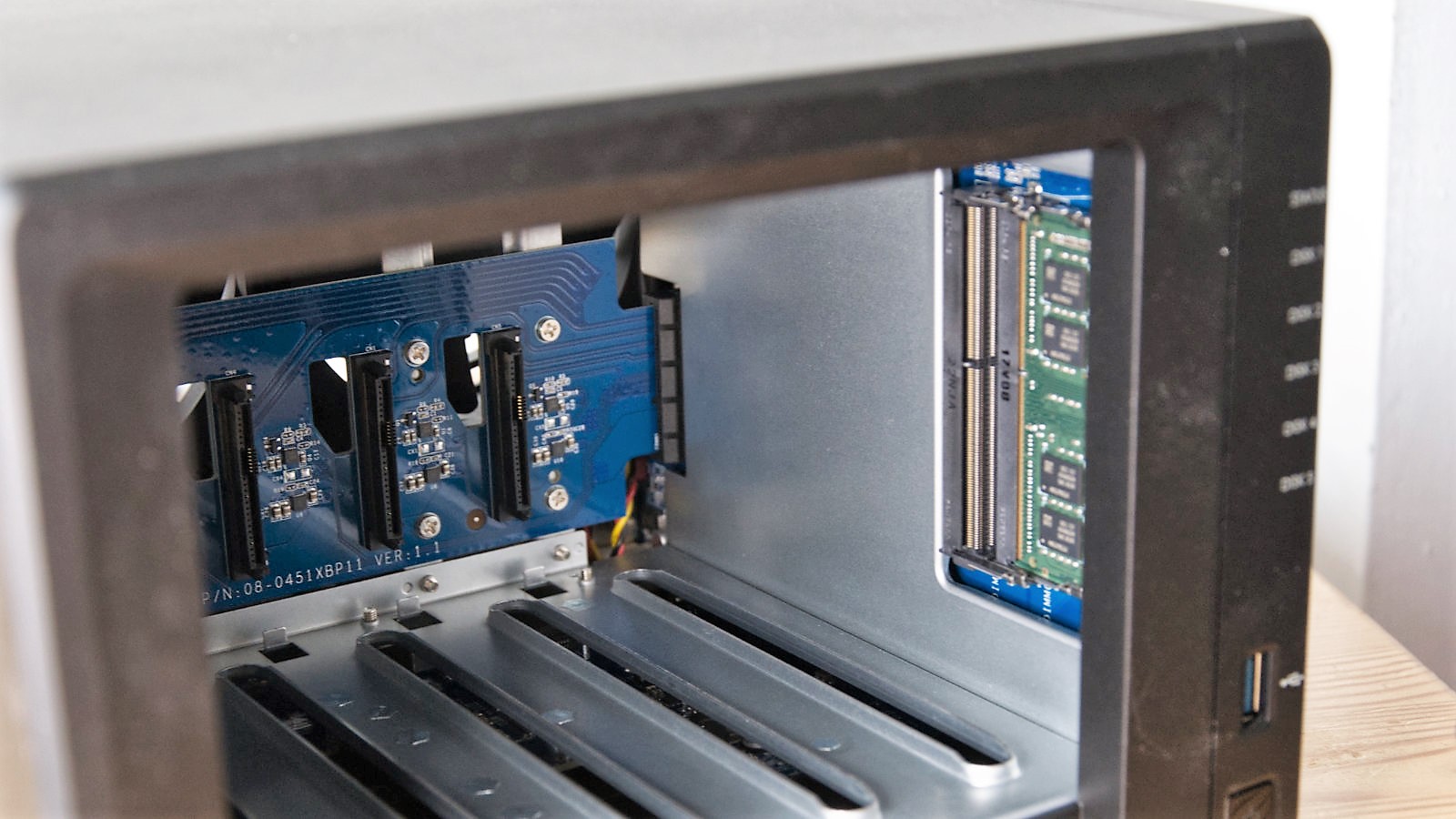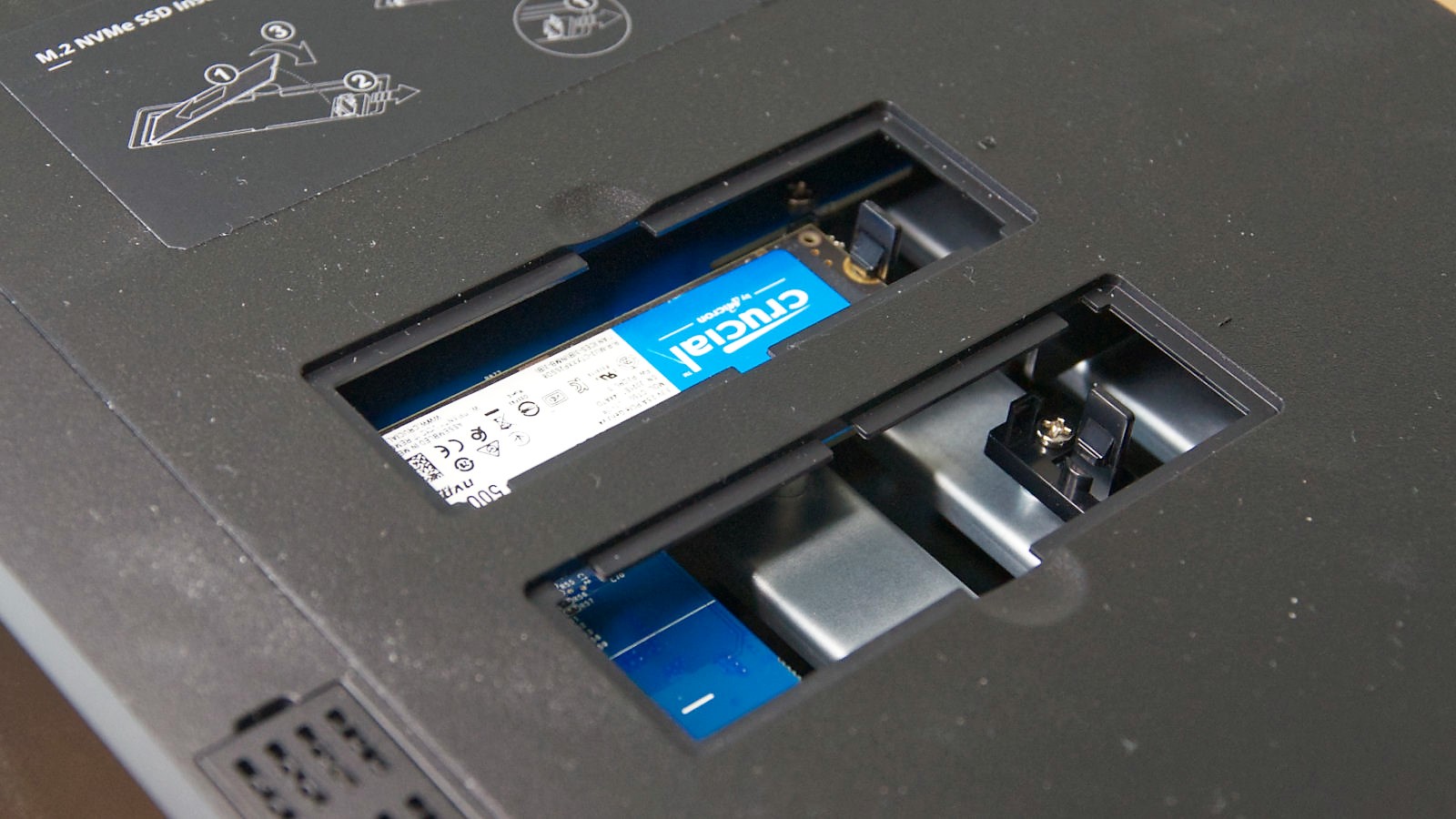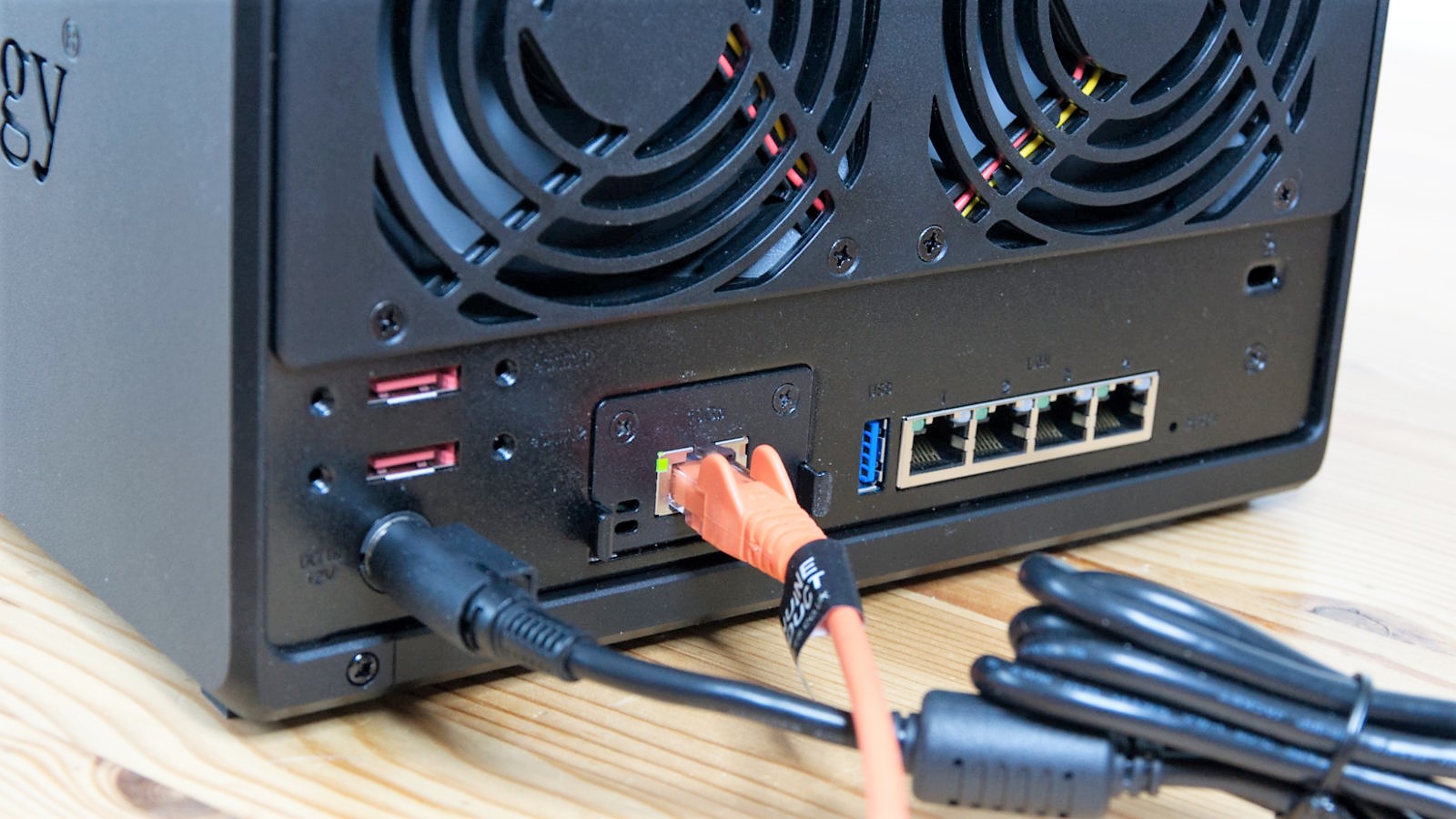TechRadar Verdict
Lots of good things in the DS1522+, although it displays Synology’s dislike of specific technologies, and there is still significant room for improvement, especially on external drive connections.
Pros
- +
AMD Ryzen power
- +
Toolless upgrades
- +
10GbE option
- +
Synology DSM 7.1
Cons
- -
Expensive
- -
No USB 3.2 Gen 2 ports
- -
Can’t use NVMe drives as storage
- -
Lacks 2.5GbE LAN as standard
Why you can trust TechRadar
Each year Synology revamps its NAS. Not in a wholesale way, but selectively.
It doesn’t enhance each product in the range, just those it thinks aren’t competing well against competitor options.
Some lines aren’t updated for much longer, explaining how the DS218Play is still part of the line-up after four years and now chilling in the ‘value series’.
Conversely, the plus series NAS now consists of five 2020 designs, two from 2021 and the new machine we’re looking at today, the DS1522+.
In the mainstream NAS models, this is the only 22 series released so far, although we expect some more models before this year is over.
Our concern is that the DS1522+ will fall into the regular mire of Synology releases, where they try to avoid undermining other models in its comprehensive range.
With so many products, Synology has created an almost impossible minefield to navigate, leading to some bizarre choices that can confuse its customers.
Sign up to the TechRadar Pro newsletter to get all the top news, opinion, features and guidance your business needs to succeed!
As the first significant new 22 series NAS, is the DS1522+ an upgrade worth considering or another glass-half-empty option?

Pricing and availability
In the UK, the DS1522+ costs £719 from several prominent online retailers but can be found for under £700 in a few places. That price level is significant because it’s the official MSRP of the previous DS1520+ design. The prior model can be sourced for closer to £650.
For US customers, Amazon.com has this hardware for $699.99, and the DS1520+ is at least $40 cheaper.
The selection of five-bay, or more, desktop NAS is small, but a cheaper alternative is the QNAP TS-653D-8G. It has six bays, two 2. 5GbE LAN ports, and critically a standard PCIe card slot for upgrading in whatever way suits the owner. And, this all costs around £50 or $50 less than the DS1522+.
For those that only want file serving, TerraMaster makes several NAS that have the same or more bays and cost substantially less.

Design and features
From a purely aesthetic viewpoint, there is little to discuss here. As to the casual observer, the DS1522+ looks almost identical to the machine it directly replaces.
It has the exact dimensions and almost the same ports in mostly the same places. The differences between the two enclosures are very subtle.
However, it is different in respect of an access panel on the rear of the unit for an optional 10GbE network adapter, and the placement of the four 1GbE ports is shifted slightly to make room for this.
What’s mildly annoying about the 10GbE adapter is that it’s a proprietary Synology slot design, and at this time, the only card that fits is a 10GbE E10G22-T1-Mini adapter.
The best thing about this card is that it’s an RJ45 design that can also operate as 1Gbit, 2.5GbE or 5GbE if you don’t have 10GbE technology.
Except you must pay for a 10GbE adapter, even if you choose to use a lesser technology.
Here is the configuration of the Synology DiskStation DS1522++ TechRadar reviewed:
CPU: AMD Ryzen R1600
RAM: 8 GB DDR4 ECC SODIMM (expandable up to 32 GB)
Storage: 5x 3.5" or 2.5” SATA HDD/SSD, 2 x M.2 2280 NVMe SSD
LAN ports: 4 x 1GbE (RJ-45), optional 1x 10GbE
External ports: 2 x USB 3.1 Gen 1, 2 x eSATA
Expansion: Via eSATA (2 x DX517) for 10 extra drive slots, proprietary card slot
Weight: 2.7 kg without drives
Size: 166 mm x 230 mm x 223 mm (W x D x H)
Warranty: 3-year limited
We don’t understand what Synology has against 2.5GbE, but they made the end plate of their card so small that it probably would be tough to fit dual 2.5GbE ports on it with a potentially more helpful card.
Even though proprietary, this card links to PCIe 3.0 with two lanes, providing a total of 16Gbits of bandwidth. Therefore, using this for a single 10GbE card underutilises the available pathway.
Inserting this card is the only bit of any installation that requires tools since two small screws hold it in place. The drives, NVMe modules and memory, can be installed without any tools.
Most changes in this design are mostly related to the motherboard, as this is the first Synology NAS to use the AMD Ryzen Embedded R1600 processor.
It’s hard to gauge if the DS1522+ appears to be another step in a broader transition to AMD Ryzen silicon. Based on the efficiency of these chips and the power they deliver, this pathway makes strategic sense.

Other NAS makers have moved from the Intel Celeron J4125 to its replacement Celeron N5105. In a direct comparison between the Ryzen R1600 and Celeron N5105, there seems little to divide them. The Celeron is four cores without hyperthreading, and the R1600 is dual core with hyperthreading, enabling both to handle four threads.
Where they start to diverge is that the base clock of the Ryzen is 2.6GHz, versus 2.0GHz on the Celeron, and the Turbo boost is also greater.
But these are the small part of this equation and why the R1600 ended up in the DS1522+.
While the memory speed is marginally quicker on the Celeron, the Ryzen SoC can address more RAM, 32GB, not the 16GB on the Intel chip.
While having this much RAM might only be of interest to those that are running many applications on their NAS, this is exactly the scenario that the DS1522+ is ideal for.

Mark is an expert on 3D printers, drones and phones. He also covers storage, including SSDs, NAS drives and portable hard drives. He started writing in 1986 and has contributed to MicroMart, PC Format, 3D World, among others.

